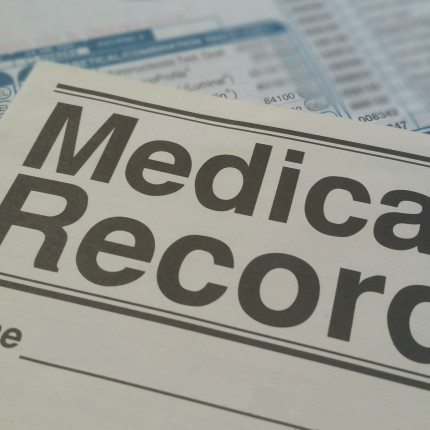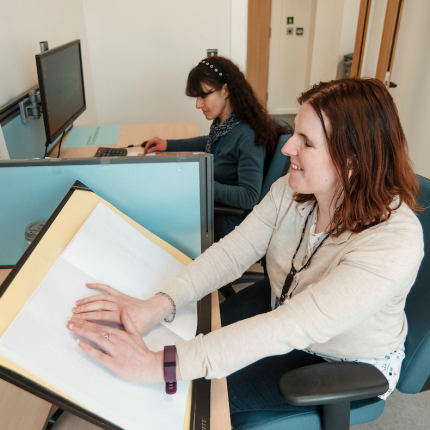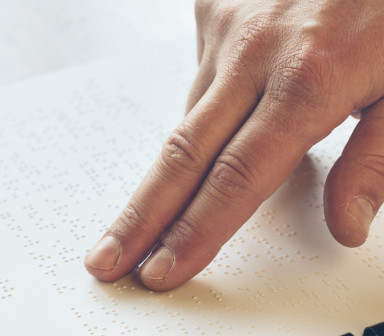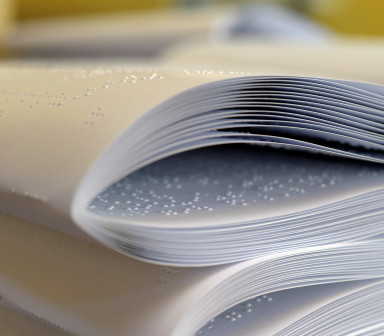Accessible formats, sometimes called alternative formats, are alternative means of presenting information for people who are unable to access it in its original written format.
There are a number of accessible formats that can help blind and partially sighted people to access information, with some more commonly used than others.
The importance of accessible formats
It is extremely important for equality, inclusion, personal security and independence that accessible format are easily and readily available to people who require them.
In order to comply with the Equality Act 2010, it is essential that public, private and voluntary sector organisations are able to produce information, if requested, in alternative formats.
For example, if a visually impaired person’s bank account statements are sent to them in standard print, this would make it impossible or as at the very least unreasonably difficult for them to access that service. The bank should be able to provide statements in a format that they can access, which might be large print, audio or braille, depending on the person’s individual need.
Braille
Braille is a tactile system that allows blind, partially sighted and deafblind people to access the written word. It is designed to be read using finger touch and enables independent writing. Raised dots are presented in various combinations (with 63 various combinations) to represent letters, words and punctuation.
This 200-year-old code is still used today in printed formats, from braille books and publications to documents such as bank statements. Braille can be used on signage in public spaces and for labelling items. Braille is now also used in combination with modern assistive technologies: people who can read and write braille can use technology such as braille displays and braille notetakers to access the written word on digital devices. There are also braille symbols for mathematics and music.
Audio
Audio is a particularly important accessible format for many blind and visually impaired people who do not use braille. In addition, people with learning difficulties or dyslexia can often find it easier to listen to information rather than read it. Audio is a wide-spread accessible format and offers independence and speedy access to information in many situations.
Audio formats are an option that provide access to many written materials. Examples include audio books (available to download or receive on a USB stick) and talking newspaper services. Audio transcription of written materials – from bank statements and bills to entire documents and publications, is offered by transcription services such as the Scottish Braille Press.
Audio also enables blind and visually impaired people to access the digital world. Screen reader software such as Dolphin or JAWS converts text on a screen into audio. Synapptic software has voice recognition and audio functions in addition to colour contrast and magnification functions, allowing visually impaired people to navigate devices such as tablets and Smartphones using voice command and listening to the voiceover. They can write emails and texts with speech-to-text functions. There are also mobile apps that can quickly convert text to speech.
Audio description (AD) can make also make film, TV and theatre more accessible to people with a visual impairment. Audio described television programmes are available through digital televisions – either as a built-in option or a set-top box that connects to your television. An audio description service is currently offered for selected films in cinemas and in some theatres: narration for the film or performance, which fills gaps in the dialogue, is provided through personal headphones.
Large print
Some people who have a visual impairment still have enough sight to be able to read print materials as long as they are provided in a size, font, colour and layout that best suits their vision. Sometimes the use of colour contrast, with different coloured text set against a different coloured background, can also be very helpful in making text easier to see. Different colour contrasts will work better for different people depending on their sight condition and the level of sight they have and personal preferences.
Accessible format transcription services, such as the Scottish Braille Press, can provide large print documents in quantities ranging from a single copy up to several thousand copies.

Tactile graphs, images, diagrams and maps
Tactile graphics have raised surfaces to convey non-textual information. Blind and visually impaired people can access the information they convey by feeling these raised surfaces.
A diagram can be adapted to be tactile. The aim would be to avoid clutter but retain essential information. Line thickness, space between features and clear labelling are important. It is often useful to use alphabetic labels and a key to reduce crowding.
A diagram can be made as usual using Word and the braille font. It is then printed onto ‘swell’ paper, this is put through a fuser – a heat machine – which causes the black ink to rise making the diagram tactile. In making graphs, the grid might be dotted to allow the graph line to be distinguished more easily. In a bar graph the bars might be unfilled to allow grid lines to be identified. Older students become skilled at interpreting diagrams but it can be confusing at first.
Accessible web pages and social media
Websites can now be designed with a number of features for accessibility. Elements such as a version offering more colour contrast and enlarged text and keyboard shortcuts can help people with a visual impairment access a website’s information more easily.
Screen reader software enables blind and visually impaired people to use digital devices by offering audio description, text-to-speech conversion, magnification and colour contrast functions to show what’s on a screen. Braille technology like refreshable braille displays and notetakers also link up to devices via screen reader software, enabling users to type and read what’s on a screen with braille.
Alternative text is text which describes images on websites and social media. Screen readers can read any alternative text that’s been applied to an image, making it more accessible.
The Scottish Braille Press
The Scottish Braille Press offers a wide range of transcription services for accessible formats, including braille, large print and audio transcription.
Find out more about our accessible formats services in our Enterprise section.



